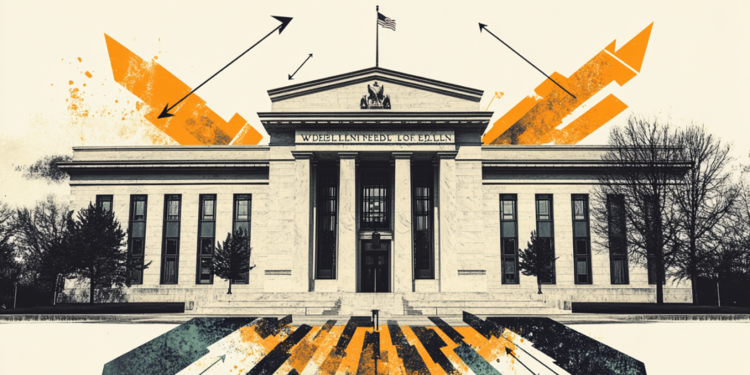- The US dollar pauses as investors analyze recent comments from Federal Reserve officials.
- Markets appear skeptical of the Fed’s guidance and continue to anticipate possible cuts in September.
- Cautious comments from Fed officials limit the US dollar’s declines.
On Wednesday, the US Dollar, as measured by the DXY Index (DXY), remained relatively unchanged around the 105.20 level as investors analyzed the words of top Federal Reserve (Fed) officials on a calm Wednesday. After last week’s 0.50% gain, the index is on a three-day losing streak.
The US economic outlook is beginning to show some signs of weakness. If the data continues to fuel hopes of a rate cut in September, the USD could struggle.
Market Drivers: US Dollar Flat as Markets Grapple with Fed Comments
- Cleveland Fed President Loretta Mester expressed a preference for a “longer series of favorable inflation data” before making a firm decision.
- Minneapolis Fed President Neel Kashkari said waiting until December to cut interest rates could be a “reasonable prediction.”
- Philadelphia Federal Reserve President Patrick Harker proposed the likelihood that the Fed will keep rates steady for longer than the market currently anticipates.
- On a more dovish note, Fed Governor Adriana Kugler suggested that if economic conditions continue to show improvement, the Fed could consider additional rate cuts.
- His colleague, Richmond Fed President Thomas Barkin, similarly indicated his willingness to support a rate cut, but would need more data before doing so.
- According to the CME Group’s FedWatch tool, the probability of lower interest rates for the next meeting on September 18 now stands at around 67%, which clashes with the Fed’s guidance that only hinted at a cut in 2024.
DXY Technical Analysis: Momentum weakens, but bullish sentiment persists
Technical indicators showed flat momentum for Wednesday’s session, but the overall outlook remains optimistic. The RSI remains above 50, with the MACD still showing green bars pointing towards bullish sentiment.
Furthermore, the DXY continues to hold above its 20-day, 100-day, and 200-day SMA, which, along with investors’ apparent pause, presents a persistent bullish outlook for the US Dollar. However, these indicators suggest that last week’s momentum may be starting to wane, contributing to a consolidation phase in the DXY.
The U.S. dollar
The United States Dollar (USD) is the official currency of the United States of America, and the “de facto” currency of a significant number of other countries where it is in circulation alongside local banknotes. According to 2022 data, it is the most traded currency in the world, with more than 88% of all global currency exchange operations, equivalent to an average of $6.6 trillion in daily transactions. After World War II, the USD took over from the pound sterling as the world’s reserve currency.
The single most important factor influencing the value of the US Dollar is monetary policy, which is determined by the Federal Reserve (Fed). The Fed has two mandates: achieve price stability (control inflation) and promote full employment. Your main tool to achieve these two objectives is to adjust interest rates. When prices rise too quickly and inflation exceeds the 2% target set by the Fed, the Fed raises rates, which favors the dollar. When Inflation falls below 2% or the unemployment rate is too high, the Fed can lower interest rates, which weighs on the Dollar.
In extreme situations, the Federal Reserve can also print more dollars and enact quantitative easing (QE). QE is the process by which the Fed substantially increases the flow of credit into a clogged financial system. This is an unconventional policy measure used when credit has dried up because banks do not lend to each other (for fear of counterparty default). It is a last resort when a simple lowering of interest rates is unlikely to achieve the necessary result. It was the Fed’s weapon of choice to combat the credit crunch that occurred during the Great Financial Crisis of 2008. It involves the Fed printing more dollars and using them to buy US government bonds, primarily from financial institutions. QE usually leads to a weakening of the US Dollar.
Quantitative tightening (QT) is the reverse process by which the Federal Reserve stops purchasing bonds from financial institutions and does not reinvest the principal of maturing portfolio securities in new purchases. It is usually positive for the US dollar.
Source: Fx Street
I am Joshua Winder, a senior-level journalist and editor at World Stock Market. I specialize in covering news related to the stock market and economic trends. With more than 8 years of experience in this field, I have become an expert in financial reporting.







